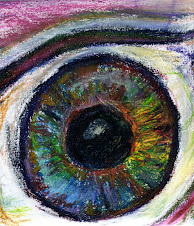Showing posts with label reversals. Show all posts
Showing posts with label reversals. Show all posts
Tuesday, June 30, 2009
Does Your Child Stand With One Leg or Arm Wrapped Around the Other?
Many of the children whom I see for in-office vision therapy have more than one learning-related visual issue that makes it difficult for them to succeed in school. Sometimes a child presents with a severe laterality and directionality delay. Laterality is the ability to tell left and right accurately on yourself. Directionality is the ability to project the knowledge about left and right away from yourself into space. Both are visual spatial skills, i.e. processing skills or visual perceptual skills. We discover the extent of a child's delays using a combination of tests: the Piaget Test of Left/Right Awareness, either the Jordan or the Gardner test of letter reversals, and a dyslexia screener. Children who cannot cross the mid-line or who make frequent reversals when reading or writing letters and numbers often score poorly on these tests, all of which have age/grade level expected normed scores. Then we use a series of activities in therapy to address any laterality and directionality delays. (The Yellow Book in the Eye Can Too! Read series provides parents and teachers with similar activities and information about how to understand a child's behavior when doing them.) I have recently noticed that many of the children with the most severely delayed laterality and directionality skills stand or sit with one leg wrapped around the other. They often twist their bodies when standing, and seem to be holding themselves together with the right hand grabbing their left side and the left hand grabbing their right side. I think that this postural habit exacerbates the problem by making it difficult for the child to know which body parts belong to the right side and which to the left. I have begun to coach parents to discourage their children from using these positions as another way to address the child's visual spatial problems which they sometimes express as being "confusing." I'd love to know whether others see the same correlations. Feel free to add your comments. Thanks.
Wednesday, February 18, 2009
Does your student make frequent reversals when reading or writing? Here's help!
If your student makes frequent reversals when reading or writing or gets confused about left and right, the second book, The Yellow Book, in my three book series: Eye Can Too! Read ...Better, Faster, Without Making Reversals or Getting Confused may help. These behaviors are often due to a delay in a student's development of the visual spatial skills of laterality and directionality. Sometimes students who make frequent reversals when reading or writing are labeled dyslexic even though there is no consensus among the various disciplines on a definition for dyslexia. However, many of these students who receive vision therapy designed to address the visual spatial developmental issues overcome them. They often make significant gains in their academic performance as a result. The Yellow Book contains a series of activities like the ones we use in the vision therapy context which are designed to help students improve both of these visual spatial skills. Created with home-school families in mind, each activity identifies the visual skills used, the academic objectives and appropriate grade or ability level, a list of materials needed, clear instructions, and a set of observation guidelines to help you to understand what your student's performance may indicate. The book is available at http://www.home-school-inc.com/store/p-15-item-000014.aspx as a pdf download or as a printed spiral bound text. The Purple Book (the first in the series) is also available online at Home School Inc- it gives similar activities designed to help students improve the eye movement skills that must be in place for a student to be able to read efficiently without skipping words, lines, or losing their place. In a few weeks, the third book in the series, The Green Book, will also be available. That book provides academic activities designed to improve a student's visual perceptual skills. Each book contains graded activities for Pre-K through 8th graders. While they are all written for a home school audience, classroom teachers will find the activities easy to adapt for their class either as whole group or learning center activities.
Subscribe to:
Posts (Atom)




